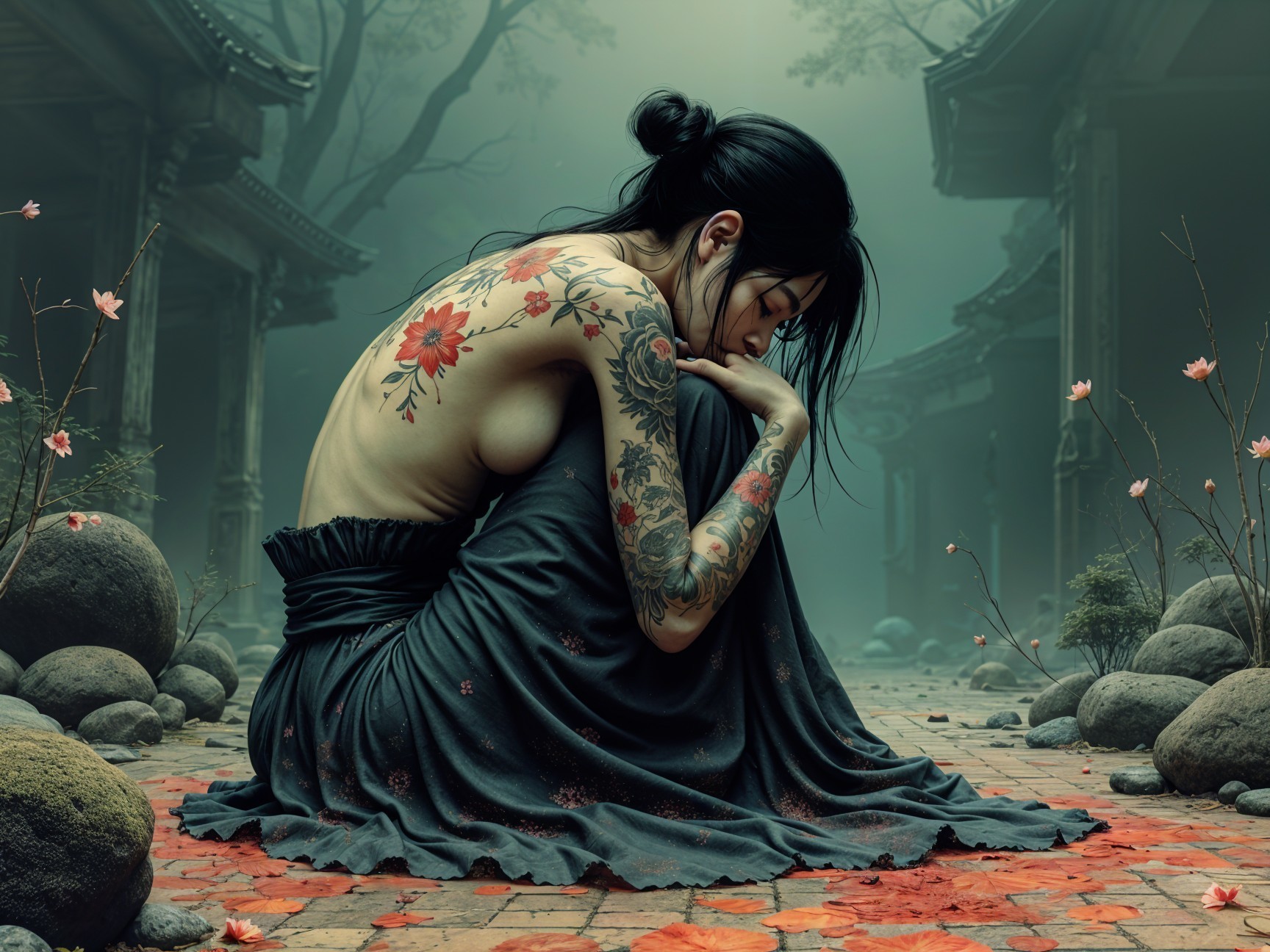Prompt:
An illustration in the unmistakable style of Zdzisław Beksiński, where the subject and her surroundings are transformed into a nightmarish, surreal vision that feels both intimate and apocalyptic.
A young Yakuza woman sits curled on the ground of what was once a Japanese garden, but here the garden is reimagined as a ruin of memory and decay. Mossy stones, fallen petals, and wooden torii are no longer serene—they are eroded into skeletal silhouettes, textures of ash, bone, and dust. The air is thick with muted greys (Pantone 423 C), sand-like ochres (Pantone 7502 C), and deep black shadows (Pantone Black 6 C), interrupted by occasional flares of vermilion (Pantone 1797 C), like the ghost of cherry blossoms burnt into the atmosphere.
She sits with her knees pulled close, face resting against them, yet her form does not feel solid. Her skin dissolves into cracked textures, the flesh almost eroded like stone, marked by Yakuza tattoos that bleed and fragment:
Cherry blossoms withered into dark stains, petals resembling charred fragments.
Lotus flowers twisted and ghostly, their outlines barely visible in violet and teal echoes.
Koi carp half-swallowed by shadows, scales crumbling like corroded metal.
Her long ceremonial skirt is rendered not as fabric but as a flowing ruin: folds of deep indigo (Pantone 2757 C) and faint vermilion that collapse into frayed, disintegrating textures, as if woven from ash and decayed silk.
Her hair is black (Pantone Black 7 C), tied loosely in a low knot, but its strands burst outward, not as natural movement but as tendrils of darkness, almost skeletal, framing her face like broken wings. Her face itself, though calm and distracted, is haunted: her lips closed softly, eyes half-veiled in shadow, yet her features seem on the verge of disintegration, a delicate human presence threatened by the erosion of time and nightmare.
The background is suffocating: a fractured void of walls and garden stones melting together, rising like ruined towers, bleeding into endless skies of brown-grey dust. Shapes linger at the edge of perception—broken statues, skeletal silhouettes, half-seen forms—that echo the woman’s own fragility.
The entire composition radiates quiet despair wrapped in sensual melancholy: a young woman who should be serene in her thoughts, instead captured in a garden that has decayed into a monument of dread and beauty, where tradition and flesh dissolve into ruin, and where her stillness becomes as monumental and unsettling as a dream carved from shadow and ash.

 Artist
Artist